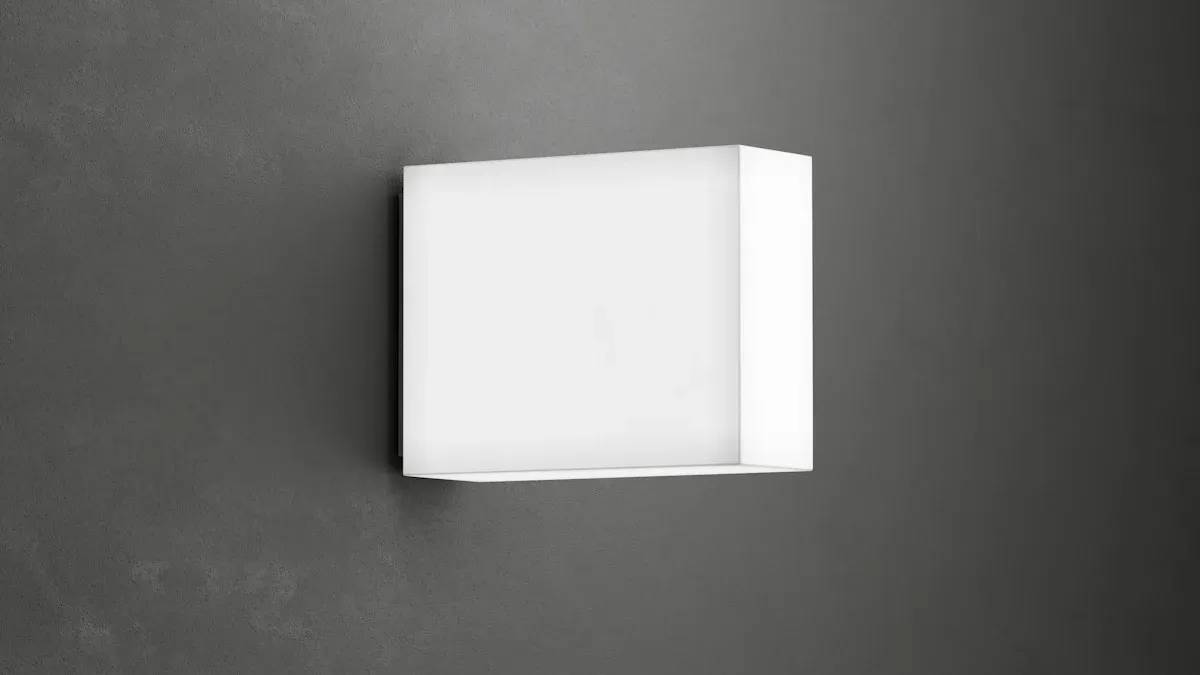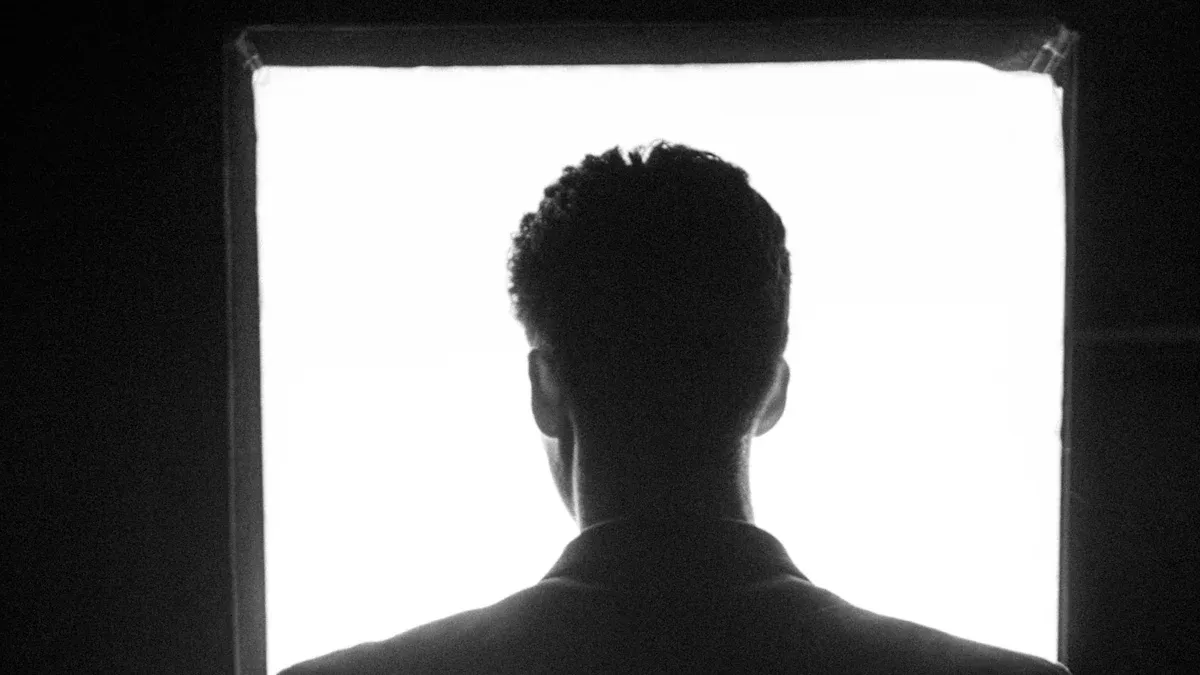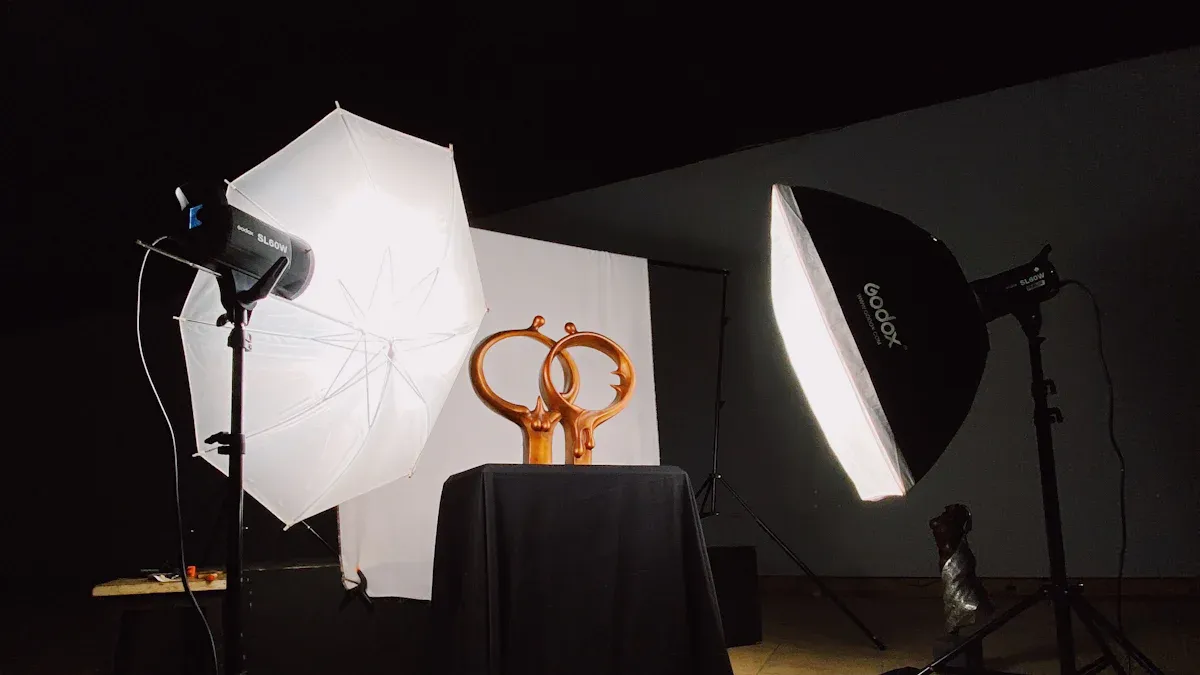White Light Box Benefits

White light therapy offers several white light box benefits that can improve mood without the need for medicine. It can boost your energy levels and help you sleep better. Additionally, it can enhance the health of your skin. Many people use these lamps in studies because they help alleviate feelings of sadness during winter and address sleep problems. White light therapy lamps mimic natural sunlight, making them especially beneficial for individuals who spend a lot of time indoors. Scientists use powerful white light boxes to support mood and sleep, showing great interest in how these devices work. Regular use of white light boxes can lead to feeling happier and experiencing improved sleep quality.
Key Takeaways
White light therapy can help you feel happier. It gives you more energy and helps you sleep better. You do not need to take medicine for this.
Use a white light box in the morning for 30 minutes. This can help reset your body clock. It can also make you feel better.
White light therapy is safe for most people. It has fewer side effects than many drugs or other light treatments.
People with seasonal affective disorder, depression, or sleep problems can get the most help from white light therapy.
For best results, use the right light intensity. Do your sessions in the morning. Try not to use bright light at night.
White Light Box Benefits
Mood and Energy
White light therapy can help you feel happier and more awake. Many people feel tired and sad in winter, especially with seasonal affective disorder. Using a white light box can raise serotonin, which helps you feel good and alert. These lamps give off up to 10,000 LUX, which is like sunlight. This helps control serotonin and melatonin in your body. It can make you feel more energetic and help you focus better. Studies show white light therapy works as well as some antidepressants for certain depression. It has fewer side effects and costs less. People often say they feel happier and have more energy after using these lamps. White light therapy does not use drugs or UV rays, so it is safe for mental health. Light boxes are a popular way to get bright light therapy. Using them often can help you stay in a good mood all year.
Tip: Try using a white light box in the morning. This may help you feel better faster than using it later.
Sleep Support
White light boxes can also help you sleep better. Many people have trouble sleeping or have mixed-up sleep schedules. This can happen when their circadian rhythms change. White light therapy helps reset your body clock. It does this by sending light to your eyes, which controls melatonin. Studies show that bright light helps people sleep longer and wake up less at night. Getting light above 1,000 lux in the afternoon, about 6.7 hours after waking, helps older adults sleep better. Staying away from bright light at night helps you sleep more. When you get light matters because your body reacts differently at different times. White light therapy is a drug-free way to fix sleep problems. It is a good choice if you want to sleep better without medicine.
Best times for sleep help:
Use white light therapy in the early or middle afternoon.
Do not use bright light in the evening.
Make sure the light is above 1,000 lux, but the best time can be different for each person.
Skin Health
White light boxes can also help your skin. Other light therapies, like UV or red light, work right on your skin. White light therapy works through your eyes and brain. This way is usually safe and has fewer risks than IPL or PDT. Studies show white light therapy has fewer and milder side effects than other light treatments. For example, DL-PDT hurts less and needs less recovery time than red-light PDT. LED therapy is safe for skin problems and rarely causes bad effects. White light therapy does not have UV rays, so it is safer for your skin. There is not a lot of safety data, but it is used as a control in studies, which means it is safe.
Therapy Type | Safety Profile | Adverse Events | Notes |
|---|---|---|---|
White Light Therapy | Usually safe | Rare, mild | No UV, low risk, used in studies |
DL-PDT | Less pain, less downtime | Milder side effects | Easier to handle than red-light PDT |
IPL | Mild or moderate pain | No serious events | People are happy, few problems |
LED Therapy | Safe, rare problems | Rare bad effects | Works for many skin issues |
White light therapy is a safe, drug-free way to help your skin, mood, and sleep. It does not have UV rays, so you can use it often without the risks of other light treatments.
White Light Therapy: How It Works

Science and Mechanism
White light therapy uses special lamps that shine very bright light. These lamps can be as bright as sunlight, up to 10,000 lux. Scientists learned that blue and green light help with mood and sleep. Blue light is about 460 nm, and green light is 525 nm. Green light at 350 lux can lower melatonin like 10,000 lux of white light. Blue light also helps babies with jaundice and people with sleep problems. The table below shows how different lights and strengths affect the body:
Wavelength Range (nm) | Intensity / Exposure Details | Therapeutic Purpose / Effect |
|---|---|---|
405–490 (Blue light) | High-intensity white LED, short exposure (90 min, thrice weekly) | Cytotoxic effects on cancer cells, treatment of superficial tumors |
460–490 (Blue light) | Not specified | Treatment of neonatal jaundice (bilirubin isomerization) |
460 (Blue light) | Not specified | Sleep disorders |
405–470 (Blue light) | Not specified | Antimicrobial activity against bacteria like H. pylori and P. aeruginosa |
White light (broadband) | High-intensity LED, short exposure (90 min, thrice weekly) | Significant anticancer effects on superficial tumors |
Green light (525 nm) | No significant effect on cancer cell survival | Control wavelength (no cytotoxic effect) |
Doctors say to use white light therapy at 10,000 lux for 30 minutes each morning. You should put the lamp close enough to get the right amount of light. Keep the light in your view, but do not look straight at it. If you use the lamp every day, you may feel better in one or two weeks.
Impact on Brain and Body
White light therapy helps your brain and body by fixing your sleep clock. The suprachiasmatic nucleus is your body’s main clock and reacts to light. Bright light in the morning helps your body wake up and feel alert. It also helps balance hormones and brain chemicals. This makes you feel more awake and happier. Light therapy lowers melatonin, which helps you sleep at the right time.
Brain chemicals like dopamine, serotonin, and norepinephrine change with light. Morning light keeps your body on a good schedule. Too much light at night can mess up your sleep and mood. Using white light therapy often helps you sleep better and feel happier. Even low light, like 100 lux, can change your body’s clock, but brighter light works better. Most people feel more energy and happiness after a few days or weeks of using white light therapy.
Who Should Use White Light Boxes
Target Users
White light therapy can help many kinds of people. Some people get more help than others. Researchers found certain groups do well with this therapy:
People with seasonal affective disorder. This is a mood problem that happens at certain times of the year.
People with nonseasonal depression. Studies show 41% of these people get much better when they use bright light therapy.
Kids and teens with depression. Research shows white light therapy works well and is safe for young people.
People with mild depression. Many feel happier and think better after using this therapy.
Older adults with Alzheimer’s disease and their caregivers. White light therapy can lower depression and is safe for people who do not want medicine.
Women with perinatal depression. Studies show many women feel better during pregnancy and after having a baby when they use this therapy.
Note: Women get seasonal affective disorder more often than men. The rate is about four times higher in women. This means women may get even more help from white light therapy, especially in winter.
Conditions Helped
Doctors mostly suggest white light boxes for people with seasonal affective disorder. This problem usually starts in late fall or early winter. People may feel tired, sad, or have trouble paying attention. They may eat more and gain weight. White light therapy can help 50% to 80% of people with this problem. Many start to feel better in the first week.
White light therapy is also being studied for other problems with the body’s clock. These include bipolar disorder, eating disorders, and ADHD. But the most common and proven use is for seasonal affective disorder. People who want a safe way to help mood and sleep problems may find white light therapy is a good choice.
Using a White Light Box

Steps and Tips
People can follow clear steps to use a white light box safely and effectively.
Select a light box with a large screen, at least 12 x 17 inches. The box should emit intense white-spectrum light, ideally 10,000 lux. Lower intensity, such as 2,500 lux, works but needs longer sessions.
Use the light box in the morning, between 5:00 a.m. and 8:00 a.m. Morning sessions help reset the body’s clock.
Sit with the light box tilted about 30 degrees above the head. Keep the eyes 10-14 inches from the screen. Avoid looking directly at the light.
Spend 30-60 minutes daily with a 10,000 lux box. For lower intensity, use 2-4 hours. Most people see improvement in 1-2 weeks.
Activities like reading or using a computer are allowed during sessions.
People should not stare into the light. Glasses are fine unless they have tinted or blue-blocking lenses.
Replace bulbs every 2-3 years to keep the light strong.
People with retinal disease or who take photosensitizing medicine should talk to a doctor first.
For seasonal affective disorder, start therapy two weeks before symptoms usually begin.
Tip: Place the light box on a desk or table where daily routines happen. This makes it easier to use white light therapy every morning.
Maximizing Results
People can get the most benefit from white light therapy by following best practices. The table below shows recommendations for treatment frequency, dose, and maintenance.
Aspect | Recommendation |
|---|---|
Treatment Frequency | Use 2-3 times per week. Three times weekly leads to faster improvement. |
Initial Dose by Skin Type | Skin Types I & II: 300 mJ/cm²; III & IV: 500 mJ/cm²; V & VI: 800 mJ/cm² |
Emollient Use | Apply a thin layer of emollient before treatment to help the skin and reduce redness. |
Dose Adjustment Based on Redness | If redness lasts less than 24 hours, increase dose by 20%. If redness lasts longer, hold or reduce dose. |
Missed Treatments | If a week is missed, keep the same dose. For longer gaps, reduce the dose or restart at the beginning. |
Maintenance Therapy | After improvement, continue weekly or biweekly treatments at a lower dose for maintenance. |
People should follow these steps and tips to get the best results and avoid problems. Regular use and careful attention to timing and dose help improve mood, sleep, and skin health.
Safety and Precautions
Risks
White light boxes can help, but there are some risks. Most people use them without big problems. Some people may have small side effects. The table below shows what can happen and what it means:
Side Effect | Description |
|---|---|
Headache | Some people, like those with migraines, may get headaches. These headaches can start fast and last for a short or long time. |
Fatigue | If you use the light at the wrong time, you might feel tired. Changes in sleep can also make you feel this way. |
Irritability | Some people may feel grumpy or get upset more easily. This can change how they act with others. |
Hypomania | People with bipolar disorder might feel extra energy or act excited after using the light box. |
Insomnia | Using the light too late can make it hard to fall asleep. It can also make it hard to stay asleep. |
Photophobia | Some people’s eyes may hurt or feel bothered by the bright light. They may squint or not like the light. |
Most of these problems are not serious and go away soon. Changing the time or brightness can help. If you still feel bad, stop using the light and talk to a doctor.
Safe Use Guidelines
You can use white light therapy safely by following some easy steps:
Most companies say to use the light box three to five times each week.
Each session should last 10 to 20 minutes. Some people may need up to 45 minutes to help their mood.
The best time to use the light is in the morning, within one hour after waking up.
Do not use the light in the evening because it can make sleep harder.
Start with short sessions and slowly make them longer.
Watch for headaches, sore eyes, or mood changes. Change your session if you notice these.
If you have eye problems like macular degeneration or diabetic retinopathy, talk to an eye doctor first.
If you take medicine that makes your skin or eyes sensitive to light, ask a doctor before starting.
Older people or those who might get eye problems should use lamps with less blue light.
Note: Wearing glasses that block UV rays can help keep your eyes safe, even though most white light boxes do not have UV rays.
Always talk to a doctor if you have health worries or take special medicine. Using the light box the right way helps everyone get the best results.
White light box benefits are feeling happier, sleeping better, having more energy, and healthier skin. Studies show that bright light in the morning raises dopamine and helps control sleep patterns. White light therapy is a way to feel better without using medicine and has fewer side effects than most drugs. People should talk to a doctor before starting and follow the directions for safe use. Using it often and safely can help many people feel happier and have more energy every day.
FAQ
How long does it take to see results from white light therapy?
Most people notice changes within one to two weeks. Some feel better after just a few days. Regular use each morning helps improve mood and sleep faster.
Can children use white light boxes safely?
Doctors say children and teens can use white light therapy. They should use lower brightness and shorter sessions. Parents should watch for side effects and talk to a doctor before starting.
Do white light boxes help with nonseasonal depression?
Studies show white light therapy can help people with nonseasonal depression. About 41% of users feel much better. Doctors often suggest it as a safe, drug-free option.
Is it safe to use a white light box every day?
Most people can use a white light box daily. Experts recommend morning sessions for best results. People with eye problems or those taking light-sensitive medicine should ask a doctor first.
See Also
Exploring Uses And Advantages Of Acrylic Light Boxes
Different Types And Benefits Of Acrylic Photo Light Boxes
Understanding The Purpose Of LED Light Box Displays
Key Technical Details And Performance Of Acrylic Light Panels

